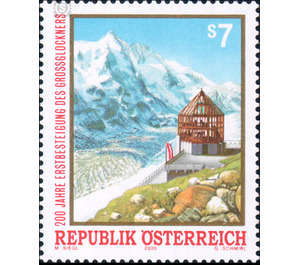200 years - Austria / II. Republic of Austria 2000 - 7 Shilling
Theme: Sports & Games
| Country | Austria / II. Republic of Austria |
| Issue Date | 2000 |
| Face Value | 7.00 |
| Printing Type | combination printing |
| Stamp Type | Commemorative |
| Item Type | Stamp |
| Chronological Issue Number | 1652 |
| Chronological Chapter | OOS-OE2 |
| SID | 872960 |
| In 61 Wishlists | |
The impetus for the attack on the Grossglockner was given in 1779 by the scientist Hacquet de la Motte. He explored the entire Eastern Alps and his publications on this subject are regarded as the starting signal for the alpine development of this mountain range. He also came to Heiligenblut, estimated the height of the Glockner at 3900 m and assumed that this summit could only be reached from the south through the Leitertal in two stages. Unfortunately, bad weather prevented him from doing so. Hacquet was among the circle of scientists and artists to Prince Bishop Salm. Salm, with his highly qualified staff, drove the exploration of Carinthia. This concerned the recording of accurate maps, geological field studies, records of the botanical stock and finally the first ascent of the Grossglockner. Also the Vicar General Sigmund Count Hohenwart belonged to this circle. Hohenwart and his mountain companions reached in August 1799 only the summit of Kleinglockner, which looks higher from the valley than the main summit. However, before crossing the dizzying Glocknerscharte she was frightened by icy rocks. Although all the world celebrated these companies, Salm was not satisfied. On July 27, 1800, he launched a successful Glockner expedition to the Salmhütte in the Leitertal. The next day was the summit storm. Four carpenters and the Döllacher pastor Horasch climbed the main summit.


